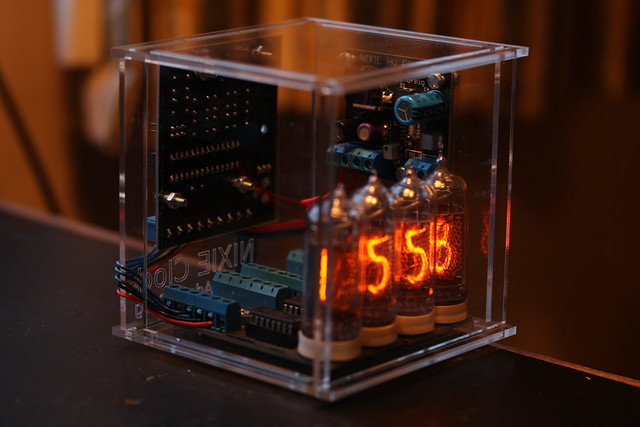What is partial application? And most importantly, why do we care about it?
Recap
First, a quick recap (You can skip this if you’re familiar with functions in JavaScript). Just about everything here applies to CoffeeScript as well, except for some folderol about handling multiple arguments. And everything except this applies to just about any programming language that supports functions as first class objects.
The functions we’re going to discuss look like this:
function add (a, b) {
return a + b;
}
Or this:
var something = function (a, b) {
return a + b;
};
arity and higher-order functions
JavaScript functions take values as arguments and return values. A function that doesn’t take arguments is nullary, a function taking one argument is unary, a function taking two or more arguments is polyadic, and a function that can take a variable number of arguments is variadic. JavaScript functions are values, so JavaScript functions can take functions as arguments, return functions, or both. Generally speaking, a function that either takes at least one function as an argument or returns a function (or both) is referred to as a “higher-order” function.
Here’a very simple higher-order function that takes a number and a function as arguments:
function repeat (num, fn) {
var i, value;
for (i = 1; i <= num; ++i)
value = fn(i);
return value;
}
repeat(3, function () {
console.log('Hello')
})
//=>
'Hello'
'Hello'
'Hello'
undefined
Helper Function
For the purposes of this article, assume the presence of the helper function variadic (or ellipsis) that converts any variadic function into a unary function taking an array of parameters. It saves us the drudgery of slicing arguments:
var __slice = Array.prototype.slice;
function ellipsis (fn) {
if (fn.length < 1) return fn;
return function () {
var ordinaryArgs = (1 <= arguments.length ?
__slice.call(arguments, 0, fn.length - 1) : []),
restOfTheArgsList = __slice.call(arguments, fn.length - 1),
args = (fn.length <= arguments.length ?
ordinaryArgs.concat([restOfTheArgsList]) : []);
return fn.apply(this, args);
}
};
var variadic = ellipsis;
function unary (first) {
return first
}
unary('why', 'hello', 'there')
//=> 'why'
variadic(unary)('why', 'hello', 'there')
//=> [ 'why', 'hello', 'there' ]
function binary (first, rest) {
return [first, rest]
}
binary('why', 'hello', 'there')
//=> [ 'why', 'hello' ]
variadic(binary)('why', 'hello', 'there')
//=> [ 'why', [ 'hello', 'there' ] ]
Variadic is a function decorator, it “decorates” a function with some additional functionality while remaining true to its underlying purpose.
What is Partial Application?
Partial application is an operation that we can apply to polyadic (arity two or more) functions. Normally, function application is a single operation:
function greet (me, you) {
return "Hello, " + you + ", my name is " + me
}
greet('Helios', 'Eartha')
//=> 'Hello, Eartha, my name is Helios'
Partial application allows us to break that single operation into two applications, one “here and right away,” and one possibly elsewhere and possibly later. How do we do something elsewhere and possibly later in JavaScript? With a function, of course, and elaborate architectures are built around this idea using techniques such as Continuation-Passing Style (a/k/a Callbacks) and Promises.
But for our purposes, we understand partial application to be an operation that takes a polyadic function and applies some of the arguments and produces a function to be executed elsewhere and/or later. A fully generalized partial application operation permits us to apply one or more arguments in any position (possibly leaving holes to be filled), but let’s consider the simplest of all possible partial applications: Given a polyadic function and a single value, it applies the value to the first argument and returns a function representing the rest of the application.
Let’s do it by hand. Working backwards, we want a function that looks like this:
var heliosGreets = function (you) {
var me = 'Helios';
return greet(me, you)
};
heliosGreets('Eartha')
//=> 'Hello, Eartha, my name is Helios'
We can’t have 'Helios' hard-coded, so we’ll hoist it out into an Immediately Invoked Function Expression:
var heliosGreets = (function (me) {
return function (you) {
return greet(me, you)
}
})('Helios');
heliosGreets('Eartha')
//=> 'Hello, Eartha, my name is Helios'
Let’s hoist the greet function too, and genericize the names a bit:
var heliosGreets = (function (fn, first) {
return function (second) {
return fn(first, second);
}
})(greet, 'Helios');
heliosGreets('Eartha')
//=> 'Hello, Eartha, my name is Helios'
Now our inner function is a bit generalized. Some of the functions it may use might require the current context. Let’s preserve it:
var heliosGreets = (function (fn, first) {
return function (second) {
return fn.apply(this, [first, second]);
}
})(greet, 'Helios');
heliosGreets('Eartha')
//=> 'Hello, Eartha, my name is Helios'
And you know what else? Some functions we might apply have more than two arguments. Let’s make the inner function variadic:
var heliosGreets = (function (fn, first) {
return variadic( function (args) {
return fn.apply(this, [first].concat(args));
})
})(greet, 'Helios');
heliosGreets('Eartha')
//=> 'Hello, Eartha, my name is Helios'
There’s only one thing left to do, extract our IIFE and give it a name:
function applyFirst (fn, first) {
return variadic( function (args) {
return fn.apply(this, [first].concat(args))
})
}
var heliosGreets = applyFirst(greet, 'Helios');
heliosGreets('Eartha')
//=> 'Hello, Eartha, my name is Helios'
In essence, we have split one function (greet) into two pieces, one taking the first argument when we called applyFirst(greet, 'Helios'), and one taking the rest, which we put in the variable heliosGreets and indeed when we called it with 'Eartha', we got back the completed application of the greet function.
To summarize, partial application splits the application of a function into two pieces, one of which we apply now with an argument, and one of which we can apply elsewhere and later with the remaining argument(s).
This “splitting into two” has another name in programming, it’s called decomposition. Normally we decompose functions by extracting sub-functions manually, or perhaps with the assistance of a refactoring editor. Refactoring and decomposition are deeply related. Refactoring is the process of decomposing a program and then recombining the parts along different lines.
If we think of partial application as a kind of decomposition, something interesting emerges. We’re decomposing along the lines of the arguments a function takes. This is often congruent to something in the domain, because different arguments tend to represent different things.
applyleft
Before we go further, here is a more general version of applyFirst that takes a variable number of arguments. applyFirst is simpler and executes faster when you only need one argument, but applyLeft allows you to partially apply any number of arguments.
var applyLeft = variadic( function (fnAndLeftArguments) {
var fn = fnAndLeftArguments[0],
leftArguments = fnAndLeftArguments.slice(1);
return variadic( function (rightArguments) {
return fn.apply(this, leftArguments.concat(rightArguments))
})
});
JavaScript’s .bind function looks a lot like applyLeft, however .bind forces you to bind the context, applyLeft allows you to skip binding the context. It’s useful when writing combinators and other higher-order functions. Again, these are function that could very well live in a library, it’s how to use them that matters.
Binding is Partial Application
Lots of libraries include a map function. Modern JavaScript includes a map method for arrays, but that obviously won’t work with array-like data structures (arguments and so forth). Typically, they look like this:
var results = map(array, function (element) {
// ...
}, this);
Note the third parameter (this) that specifies the context for the function applications. If you don’t supply it, the function being applied to each element cannot access anything in the current context. This is especially important if we’re using a map inside of a method. Depending on how map is written, the context will be the global context, null, or even some array (yecch!).
Before we go any further, let’s get rid of this. We can bind our function to this so that it always evaluates in the current context:
var results = map(array, function (element) {
// ...
}.bind(this));
Now it doesn’t matter how map deals with not supplying a context. Hey, this seems vaguely familiar. This is a function to be evaluated when given a context and an element: function (element) { ... }. And this applies the context now and waits for the element later: function (element) { ... }.bind(this).
Binding the context is a JavaScript-specific form of partial application. It’s very useful. And all we have to do with the rest of partial application is open our mind to other possibilities.
Partial Application Of Mapping
Mapping (and folding/reducing) is extremely common. After fooling around with for loops for years, a programmer can be forgiven for being extremely satisfied by writing maps whenever he wants to do something to a collection. But further abstraction is not only possible, but preferable.
Before we illustrate that, let’s introduce another partial application function in both single and general form:
function applyLast (fn, last) {
return variadic( function (args) {
return fn.apply(this, args.concat([last]))
})
}
var applyRight = variadic( function (fnAndRightArguments) {
var fn = fnAndRightArguments[0],
rightArguments = fnAndRightArguments.slice(1);
return variadic( function (leftArguments) {
return fn.apply(this, leftArguments.concat(rightArguments))
})
});
Now we can do something interesting. Let’s say we have a collection of reference objects representing something in a cache. We are doing some reference counting so we can do cache eviction. Incrementing a reference and decrementing a reference are rather obvious: ref.incrementReferenceCount() and ref.decrementReferenceCount(). Each ref contains a list of dependents this.dependentRefs(). Here’s our implementation of decrementReferenceCount:
Reference.prototype.decrementReferenceCount = function () {
--this.referenceCount;
if (referenceCount === 0)
this.decrementDependentCounts();
};
Reference.prototype.decrementDependentCounts = function () {
map(this.dependentRefs(), function (dependent) {
dependent.decrementReferenceCount();
});
};
We use our applyLast function on map:
Reference.decrementCounts = applyLast(map, function (ref) {
ref.decrementReferenceCount();
});
Now we have a so-called class method that can decrement the counts of any list. Let’s use it to refactor things:
Reference.prototype.decrementReferenceCount = function () {
--this.referenceCount;
if (referenceCount === 0)
Reference.decrementCounts(this.dependentRefs());
};
We still have two functions, but one of them is now a general decrementer that can be used elsewhere. Is this important? Possibly! Is it handy? Very much so when DRYing up code. And you can use this technique with filter/select, with reduce, and anything else working over collections.
Another Partial Application with Binding Semantics
Languages that don’t do anything special with this are quite happy with a few forms of partial application. JavaScript needs a few more in very large part because of the importance of managing this when working with objects. This function, send, is useful for mapping over objects by sending them a message. It emulates Ruby’s Symbol#to_proc with some extra partial application goodness. For our purposes, the implementation is:
var send = variadic( function (nameAndArgs) {
var methodName = nameAndArgs[0],
leftArguments = nameAndArgs.slice(1);
return variadic( function (receiverAndArgs) {
var receiver = receiverAndArgs[0],
rightArguments = receiverAndArgs.slice(1);
return receiver[methodName].apply(receiver, leftArguments.concat(rightArguments))
})
})
We use send like this. Instead of:
Reference.decrementCounts = applyLast(map, function (ref) {
ref.decrementReferenceCount();
});
We write:
Reference.decrementCounts = applyLast(map, send('decrementReferenceCount'));
And people complain JavaScript is verbose. JavaScript is not verbose, attempting to write Java code in JavaScript is verbose. JavaScript is a functional language. When you use functional programming idioms in JavaScript, you are “cutting with the grain.”
Speaking of which… When you’re holding the partial application hammer, every piece of code begins to look like a function to be decomposed nail. The third time you write applyLast(map, ...), you ought to ask yourself, “Can I extract this?”
Yes you can:
var splat = applyFirst(applyLast, map);
var squareAll = splat(function (n) { return n * n });
squareAll([1, 2, 3, 4, 5])
//=> [1, 4, 9, 16, 25]
Which leads us to:
Reference.decrementCounts = splat(send('decrementReferenceCount'));

Conclusion
Partial application is what allows us to abstract away a lot of function scaffolding, in large part because it’s a compact way to decompose functions.
(discuss on lobste.rs, /r/programming or /r/javascript)
Notes:
variadic/ellipsis,applyFirstandapplyLastare just a few of the utility functions in the allong.es library.applyFirstandapplyLastwere inspired by Michael Fogus’ Lemonad. Thanks!- The ideas in this post are shamelessly extracted from my book JavaScript Allongé. Yes I am pimping it out! Please consider downloading the free sample PDF. It comes with a no questions asked, 100% money-back guarantee.



